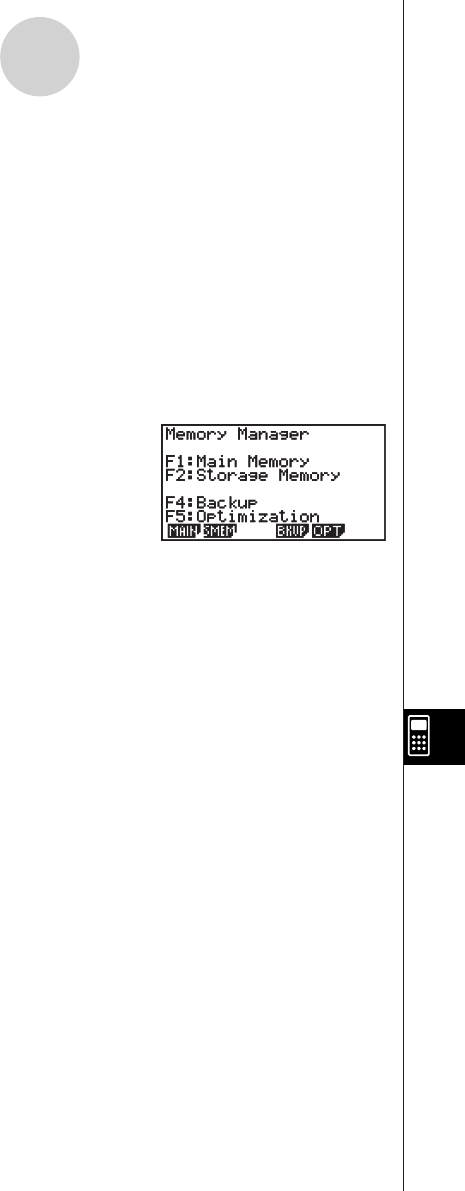User's Manual
Table Of Contents
- Quick-Start
- Precautions when Using this Product
- Contents
- Getting Acquainted— Read This First!
- Chapter 1 Basic Operation
- Chapter 2 Manual Calculations
- Chapter 3 List Function
- Chapter 4 Equation Calculations
- Chapter 5 Graphing
- 5-1 Sample Graphs
- 5-2 Controlling What Appears on a Graph Screen
- 5-3 Drawing a Graph
- 5-4 Storing a Graph in Picture Memory
- 5-5 Drawing Two Graphs on the Same Screen
- 5-6 Manual Graphing
- 5-7 Using Tables
- 5-8 Dynamic Graphing
- 5-9 Graphing a Recursion Formula
- 5-10 Changing the Appearance of a Graph
- 5-11 Function Analysis
- Chapter 6 Statistical Graphs and Calculations
- Chapter 7 Financial Calculation (TVM)
- Chapter 8 Programming
- Chapter 9 Spreadsheet
- Chapter 10 eActivity
- Chapter 11 System Settings Menu
- Chapter 12 Data Communications
- Appendix

20070201
12-7-1
MEMORY Mode
12-7 MEMORY Mode
This calculator has two separate memory areas: a “main memory” and a “storage memory.”
The main memory is a work area where you can perform input data, perform calculations
and run programs. Data in the main memory is relatively safe, but it can be deleted when
batteries go dead or when you perform a full reset.
The storage memory uses “fl ash memory,” so data is safe even when power is interrupted.
Normally, you would use the storage memory for data you need to store securely for long
periods and load it into the main memory only when you need it.
Use the MEMORY mode to transfer data between the main memory and storage memory,
and to perform other memory management operations.
From the Main Menu, select the MEMORY icon to enter the MEMORY mode and display its
initial screen.
• { MAIN } ... {displays main memory information}
• { SMEM } ... {displays storage memory information}
• { BKUP } ... {main memory backup}
• { OPT } ... {storage memory optimization}










